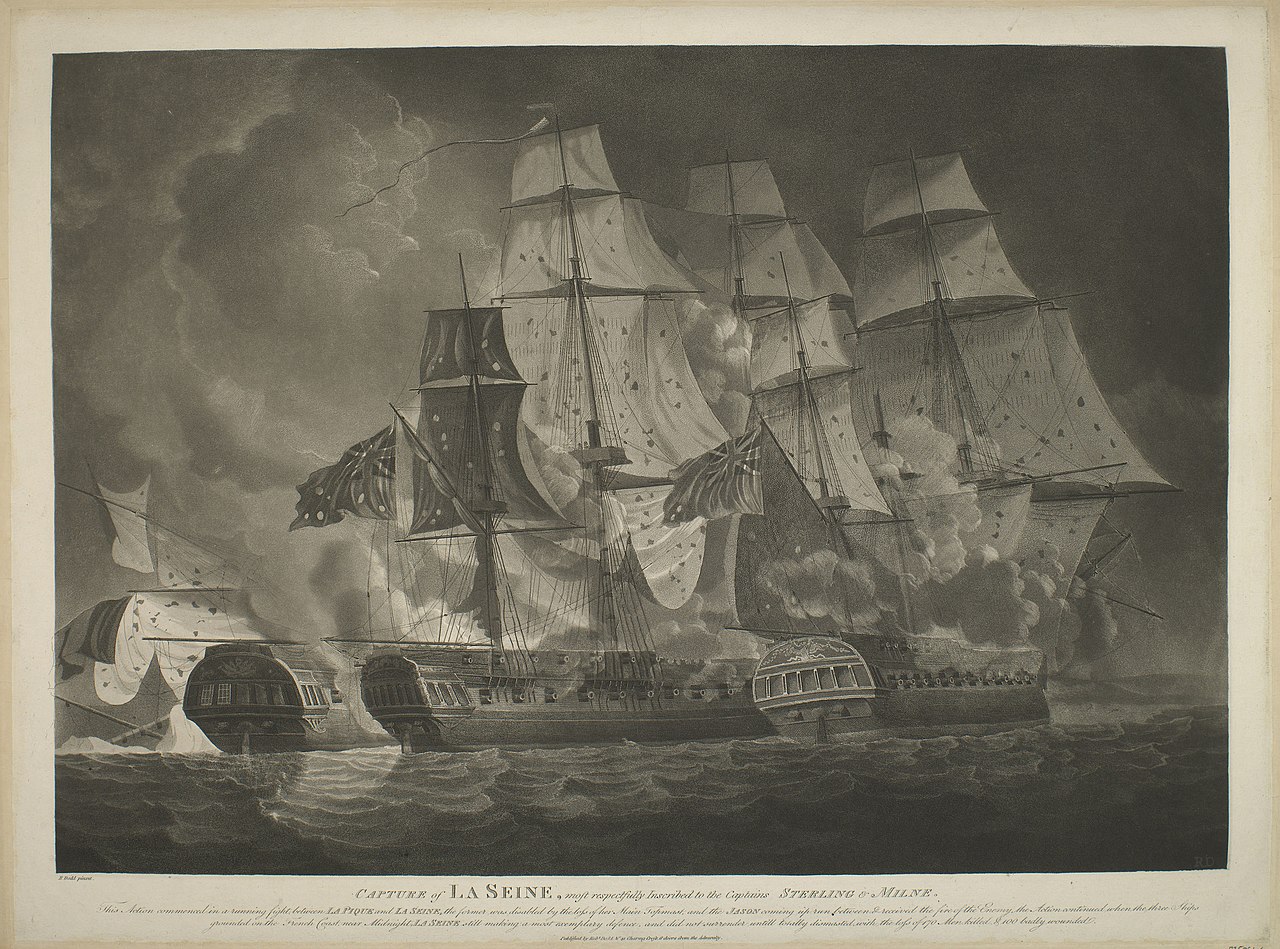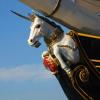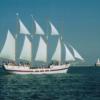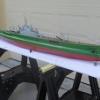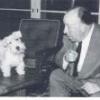-
Posts
2,245 -
Joined
-
Last visited
Reputation Activity
-
 Beef Wellington reacted to RGL in HMS King George V by RGL - FINISHED - Tamiya - 1/350 - PLASTIC
Beef Wellington reacted to RGL in HMS King George V by RGL - FINISHED - Tamiya - 1/350 - PLASTIC
The next lot in the paint cue, davits, focsle equipment, etc etc. I even ordered more carley floats. With soo many tiny pieces I have to alternate as I’d just go mad.
-
 Beef Wellington got a reaction from Mirabell61 in HM Cutter Cheerful 1806 by Blue Ensign - FINISHED - Syren Ship Model Company - 1:48 scale
Beef Wellington got a reaction from Mirabell61 in HM Cutter Cheerful 1806 by Blue Ensign - FINISHED - Syren Ship Model Company - 1:48 scale
Catching up a bit, love the treenails and nicely done on the molding strip. My feeling is that impression of the detail, rather than absolute accuracy, is 90% what the eye sees, and my eye likes what it sees 😊
-
 Beef Wellington reacted to Dowmer in Alaskan Yellow Cedar
Beef Wellington reacted to Dowmer in Alaskan Yellow Cedar
To give everyone an idea of how Alaskan Cedar ages, the below pic is of a ship I started in 2001. I then put it away in 2003 in a box. No sunlight on it, but it does have a light coat of Tung oil. You can see it has aged to a soft golden yellow. Very pleasing.
The rest of the wood is ebony and holly.
Let’s just say the ship has “weathered in frame” as they used to do. It’s about time it made it back to the lumberyard and onto the shipways to get finished. 😊
-
 Beef Wellington got a reaction from Elijah in Prince de Neufchatel by rafine - FINISHED - Model Shipways - 1:64
Beef Wellington got a reaction from Elijah in Prince de Neufchatel by rafine - FINISHED - Model Shipways - 1:64
Very nice clean work Bob, I love the fine details that you achieve.
-
 Beef Wellington got a reaction from Canute in Prince de Neufchatel by rafine - FINISHED - Model Shipways - 1:64
Beef Wellington got a reaction from Canute in Prince de Neufchatel by rafine - FINISHED - Model Shipways - 1:64
Very nice clean work Bob, I love the fine details that you achieve.
-
 Beef Wellington reacted to Hubac's Historian in Soleil Royal by Hubac's Historian - Heller - An Extensive Modification and Partial Scratch-Build
Beef Wellington reacted to Hubac's Historian in Soleil Royal by Hubac's Historian - Heller - An Extensive Modification and Partial Scratch-Build
MASTERS MADE
I was speaking with Dan, yesterday, who gave me some really helpful tips for mounting objects this small, with thin-set cyano. The basic idea was to hold the part in place on the mount with, in this case, the tip of a pen knife, while applying a small drop of cyano to one side of the part; capillary action will wick the cyano beneath the part. A quick touch with the edge of a paper towel wicks away any excess, thus reducing the corona of excess glue to nearly nothing.
In practice, I found these scrolls even too tiny to reliably hold down with the pen knife. It didn’t help, of course, that the other side of the mount had a dolphin master mounted to it, and so it was wobbly on the table. I haven’t had access to a table saw, lately, so I haven’t been able to cut up more mounting stock.
My solution was to hold each scroll by the tail, with a fine tweezer, while applying a drop of cyano to the back. I then touch the scroll down to a paper towel to wick away the excess, and then mount to the block. This left only a very little bit of squeeze out, that was then wiped away.
Here are the masters in high-definition, highlighting the remaining discrepancies and imperfections in their shaping. I will touch the tail of the upper left scroll with the tools again, but I am otherwise satisfied with their symmetry. They were too small to attempt tracing a pattern, so instead I just nipped away at uniform blanks (1/16” x 3/16”) with the tools until I liked the shape. Also, I found it necessary to simplify the scroll a little - eliminating a teensy spur from one side of the tail - because it was just too small to cut into the plastic.
What is difficult to see are the small domed accents that I added to the scroll heads. This will only show, on the finished model, as the smallest glint of reflected light, but it helps give the scrolls just a little bit if shape and dimension. Applying these domes was much easier than trying to carve them into the blank.
Next, I’ll make a trial mould and casting, and we’ll see how they turn out.
-
 Beef Wellington reacted to Blue Ensign in HM Cutter Cheerful 1806 by Blue Ensign - FINISHED - Syren Ship Model Company - 1:48 scale
Beef Wellington reacted to Blue Ensign in HM Cutter Cheerful 1806 by Blue Ensign - FINISHED - Syren Ship Model Company - 1:48 scale
Post 36
Fixing the decorative mouldings.
These went on without too much trouble, but at the bow end an extension of the moulding onto the stem, referred to as 'ears', is required to be scratched.
I couldn't find a drawing of these items on the plans to use as a working template so it was a case of trial and error.
The ear extends to the fore end of the stem and is shaped to run into the fancy moulding running back to the fore side of the bow port.
The hawse plate governs the length of the ear onto the hull; I firstly drew the ear shape onto card freehand using the hawse plate length and stem width as reference points.
4402
Once happy with the shape and fit, it was transferred onto 1/16th" Boxwood sheet,(I made several copies) cut out on the jig saw, and given the final shape using scalpel and sandpaper.
4424
The latter stages need soft hands as the stems are quite delicate where they extend back to meet the other moulding, and I did snap one just as I neared completion.
4433
The last job was to scrape the profile into the outer edge.
The macro image is not very flattering.
2201
Positioning the ears is a little tricky, they have a slightly upwards angle as they run across the stem, it took me three goes to get them to look right to my eye.
They came off ok with water but with the high risk of snapping the tail off the 'ear'
2220(2)
With the ears glued into place the lower moulding strip can be completed.
2222(2)
2222
2211
2213
2199
I've yet to decide whether to paint the counter or not, I quite like the natural look, and it is a large expanse of red.
2195
I will leave the outer hull now for a while to concentrate on the inner works, but I will return to do a final fettlin' on the outer works before I install the false deck.
B.E
28/08/2108
-
 Beef Wellington reacted to Old Collingwood in HMS Warspite by Old Collingwood - FINISHED - Academy - 1/350 scale - PLASTIC
Beef Wellington reacted to Old Collingwood in HMS Warspite by Old Collingwood - FINISHED - Academy - 1/350 scale - PLASTIC
Evening all, so carrying on from building my 15in mk1s, next step was to add the different bits of pe - including steps, escape hatch and access platforms under the rangefinders, after these had fixed it was time to paint the x turret, this was going to be AP507B mid grey - after several thin coats I decided to do a little bit of highlighting by dry brushing some white, it came out quite good I think.
Just a few pics.
OC.
-
 Beef Wellington reacted to rafine in Prince de Neufchatel by rafine - FINISHED - Model Shipways - 1:64
Beef Wellington reacted to rafine in Prince de Neufchatel by rafine - FINISHED - Model Shipways - 1:64
Well, I've been up north for the past couple of weeks having a medical procedure, but now it's back to work on PdN. I've done the head work , which is somewhat simpler than on others that I've done. That's not to say that it is ever easy to fit the cheeks and rails, but at least there was no middle rail or eking rail to fit. Once again, the plans and instructions are very vague on details, so I just fumbled along. All of the parts were made from boxwood sheet and strip.
Bob
-
 Beef Wellington got a reaction from mort stoll in HMS Bellerophon by flyer - FINISHED - Amati/Victory Models - scale 1:72
Beef Wellington got a reaction from mort stoll in HMS Bellerophon by flyer - FINISHED - Amati/Victory Models - scale 1:72
Very very nice result with those copper plates Peter, well done indeed. Keep going!
-
 Beef Wellington reacted to RGL in HMS King George V by RGL - FINISHED - Tamiya - 1/350 - PLASTIC
Beef Wellington reacted to RGL in HMS King George V by RGL - FINISHED - Tamiya - 1/350 - PLASTIC
AS previously stated, Pontos based this kit on Tamiya’s Prince Of Wales not the KGV. As such the central catapult area is a retrofit and there is no protrusions at the end of the Cats on the side of the ship provided and have to be scratch built. The 42-43 version did have the armoured splinter shields instead of railings and I have yet to add 8 single 20mm guns. Yes, I also have to fix up the paintwork and add some large scuppers.
-
 Beef Wellington got a reaction from Piet in HMS Warspite by Old Collingwood - FINISHED - Academy - 1/350 scale - PLASTIC
Beef Wellington got a reaction from Piet in HMS Warspite by Old Collingwood - FINISHED - Academy - 1/350 scale - PLASTIC
Catching up on a lot of progress, some really beautiful results, well done OC!
-
 Beef Wellington got a reaction from Martin W in HMS Bellerophon by flyer - FINISHED - Amati/Victory Models - scale 1:72
Beef Wellington got a reaction from Martin W in HMS Bellerophon by flyer - FINISHED - Amati/Victory Models - scale 1:72
Very very nice result with those copper plates Peter, well done indeed. Keep going!
-
 Beef Wellington reacted to Aleksei Domanov in HMS Vanguard by Alexey Domanoff - Amati
Beef Wellington reacted to Aleksei Domanov in HMS Vanguard by Alexey Domanoff - Amati
Cleats with pin
-
 Beef Wellington reacted to RMC in Granado by RMC - FINISHED - Caldercraft - 1:64
Beef Wellington reacted to RMC in Granado by RMC - FINISHED - Caldercraft - 1:64
Thanks Jim for taking the time to comment and thanks for all the likes (or whatever they are called now). They really encourage.
Jason You're right. Originally I tried for hooks but none of the material I had proved to be suitable for making them. Your post encouraged me to look again. Fortunately I found some etched brass fittings left over from the Vanguard that, with some work, could be made into adequate hooks. Here are the results. I hope all the mistakes are confined to these two guns (and I can now see the quoins need a touch up too) because they will be almost hidden.
-
 Beef Wellington got a reaction from flyer in HMS Bellerophon by flyer - FINISHED - Amati/Victory Models - scale 1:72
Beef Wellington got a reaction from flyer in HMS Bellerophon by flyer - FINISHED - Amati/Victory Models - scale 1:72
Very very nice result with those copper plates Peter, well done indeed. Keep going!
-
 Beef Wellington reacted to flyer in HMS Bellerophon by flyer - FINISHED - Amati/Victory Models - scale 1:72
Beef Wellington reacted to flyer in HMS Bellerophon by flyer - FINISHED - Amati/Victory Models - scale 1:72
First (port) half of the coppering is done. Me, I'm looking forward to a nice diversified work, like knotting ratlines. The copper will be polished after both sides are done. The amount of copper plates was just sufficient. By careful use of trimmed leftovers I managed to keep enough full plates to cover rudder and keel.
the scale figure of the captain shows just how much expensive copper was put on such a ship of the line
-
 Beef Wellington reacted to Bluto 1790 in HMS Leopard 1790 by Bluto - FINISHED - 1:80 - 50 gun ship - PoB
Beef Wellington reacted to Bluto 1790 in HMS Leopard 1790 by Bluto - FINISHED - 1:80 - 50 gun ship - PoB
Thanks for the comments and likes.
A little progress. Mizzen stay made off to the main mast and a start on the main shrouds >>>
The 2 black 'ropes' hanging loosely behind the main mast are shrouds number 6 for each side of the main still waiting to be attached.
The line hanging over the mizzen topmast top is the mizzen topgallant halliard. At it's fixed end it is attached to a block which is attached to the topside of the mizzen top platform. When I looked at Petersson's rigging plan it seemed to me that block would have been extremely difficult to fit into the very tight space available on that platform, so I fitted it to the platform while the platform was still off the mast.
I had already fitted the first 2 pairs of shrouds to the main when I realised that I hadn't made and fitted the Burton pendants. I made the two pairs (Burton pendants) and managed to get them squeezed down through the shrouds and secured in position over the masthead and bolsters.
The upper jeer blocks have been attached to the masthead for some time.
I had a lengthy respiratory infection and was staying away from making any sawdust for a while. That's why there have only been the main and mizzen lower and topmasts making an appearance on and off the ship for some time. I've been back at my makeshift lathe and the fore lower mast is now in position.
-
 Beef Wellington reacted to Bluto 1790 in HMS Leopard 1790 by Bluto - FINISHED - 1:80 - 50 gun ship - PoB
Beef Wellington reacted to Bluto 1790 in HMS Leopard 1790 by Bluto - FINISHED - 1:80 - 50 gun ship - PoB
Rigged the main topmast stay and preventer >
Although the above pic shows the fore topmast shrouds rigged, the main topmast stay and preventer were rigged first.
The other end of the stay and preventer >
Since the fore topmast shrouds were now in place it seemed right to rig the stay and preventer >
Somewhere in the middle of doing these stays I decided to create and fit the fairlead for the bowsprit. The first one was done freehand and didn't turn out too well so I turned to my milling machine to do it 'properly'.
Not considering that a solid piece of wood could be strong enough at that small size, I made a piece of 3 ply from thin slices of Makore. In the piece left over from my first attempt I drilled a 1mm hole near the centre and used that hole on which to pivot the wood while on a wooden jig attached to the travelling table on my milling machine. The workpiece was spun around its axis while the fairlead holes were drilled. The table was then moved enough to be able to partially cut the inner curve by spinning the piece, then moved again to another position to cut the outer curve.
The following pics should explain what I did >
and on the bowsprit >
AND ~ ALL lower mast ratlines are finished! >
Once the topmast ratlines are done I won't be looking to be doing ratlines for a while!
This is the second post I have had to edit to say that at least one photo is out of sequence -- and I don't know why . . . AND I can't fix it !!!!!
The last photo immediately above here SHOULD be the 3rd photo in the post.
-
 Beef Wellington reacted to Bluto 1790 in HMS Leopard 1790 by Bluto - FINISHED - 1:80 - 50 gun ship - PoB
Beef Wellington reacted to Bluto 1790 in HMS Leopard 1790 by Bluto - FINISHED - 1:80 - 50 gun ship - PoB
Finished the fore shrouds' ratlines >>>
Spent a couple of nights preparing 8 futtock plates and mounting the deadeyes in them for the foremast, then did the futtock shrouds and hooks (not sure if these hooks have a more 'nautical name'?) >>>
Then fitted them pesky little ratlines . . . the lowest one was the trickiest owing to the tight space to work in >>>
Beginning to find my way a bit with the ratlines and they don't seem just so tedious as they were with the main mast.
Got just over half way up the mizzen mast right now. They're still 'adjustable' at present and can be slid up or down the shrouds. I'll wait until they're at the top before equalising them, trimming the tails and putting a drop of CA on each knot to finally seize them in position >>>
Edited in an attempt to remove the bottom picture which is a duplicate of the 3rd picture in this post - - but failed !!!
I have no idea how that photo got in here twice ??? - - - and can't get rid of the unwanted one !
-
 Beef Wellington reacted to Bluto 1790 in HMS Leopard 1790 by Bluto - FINISHED - 1:80 - 50 gun ship - PoB
Beef Wellington reacted to Bluto 1790 in HMS Leopard 1790 by Bluto - FINISHED - 1:80 - 50 gun ship - PoB
Returned to the fore mast and did a few more ratlines . . . now there are 16 on each side, so I guess that must be close to halfway to the futtock stave >>>
Since I had fitted the main mast futtock shrouds I wanted to rig the topmast shrouds, but the crosstrees and bolsters would have to be in place first.
Being only about 2.5mm thick, I couldn't see how I would be able to make the crosstrees from a single piece of wood. So I attempted to make my own 'plywood'. With the bandsaw I was able to slice thin strips of only 0.63mm from a piece of Makore >>>
Four of these strips glued at right angles to the others produced plywood of around 2.5mm. As I'm not very artistic, and not trusting my ability to draw these crosstrees to be identical to each other, I copied and scaled a drawing from a book and glued that onto the plywood >>>
The milling machine ensured that the 6 holes were perpendicular as well as being in the exact spots >>>
The bandsaw released each of the strips >>>
The blanks >>>
. . . and fitted >>>
and with the shrouds >>>
Two Burton pendants also hang from the topmast platform. I only just spotted them in Petersson's rigging book before I rigged the shrouds.
I don't know about anyone else, but I get a bit weary of all those brutal close-ups, so here's how Leopard looks right now >>>
B.T.W. ~ that's just a 'working cradle' that Leopard is sitting in for now!
-
 Beef Wellington reacted to Gahm in US Brig Syren by Gahm - Model Shipways
Beef Wellington reacted to Gahm in US Brig Syren by Gahm - Model Shipways
I started work on the hammock nettings. I changed the boarding panels so that the wooden rail could be attached to the back of the panels and not to the side. I also added a little ornamentation to the panels (img 1). I used the hammock cranes from the kit, thinned them down and mounted the whole arrangement as described by Chuck in the kit instructions (imgs 2 and 3). The netting itself was framed with a rope on 2 sides to give it a clear delineation against the wooden rail and the boarding panel side (img 4). Framing only 2 sides allows for easy fine adjustment of the final width and length of the netting when mounting it on the hammock cranes. The ‘unframed’ sides are then attached via black 100wt silk thread and CA glue to the rope which spans from the boarding panel to the last hammock crane. The last hammock crane is also used to attach the ‘unframed’ end of the netting. Images 5 – 10 show different states of the process.
Thomas
Image 1
Image 2
Image 3
Image 4
Image 5
Image 6
Image 7
Image 8
Image 9
Image 10
-
 Beef Wellington reacted to Gahm in US Brig Syren by Gahm - Model Shipways
Beef Wellington reacted to Gahm in US Brig Syren by Gahm - Model Shipways
Before continuing with the remaining hammock nettings I wanted to make sure I had a good handle on the hammocks themselves. Building an acceptable representation of a hammock at the Syren scale of 1:64 turned out to be a real challenge. One of the major problems was that all the fabrics I could think of did not scale well at 1:64. The fabric texture was always far too coarse. So after some experimentation I settled for the process documented in images 1 – 4.
First I cut a ‘kernel’ of 19mm length for the hammock from a 0.063” Syren rope. Both ends of the kernel were hardened with CA glue. The kernel serves two purposes: It helps to reproducibly determine the length of the hammock, and it prevents the hammock from ‘collapsing’ and flattening out when it is folded back to its final U-shape. The kernel was glued to the top end of a 30mm x 30mm eggshell colored Polyester fabric piece. I chose Polyester because of its super fine texture (which unfortunately was still too coarse to be used for the hammocks) and its high flexibility. This piece of fabric was roughly cut to the width of the kernel, wrapped around the kernel, the roll secured with CA glue, and both ends of the roll cut back precisely to the CA hardened kernel ends (img 1). To diminish the fabric texture I glued this roll to the top of a 30mm x 40mm (width x length) piece of very thin silkspan, wrapped the silkspan around the fabric roll, and secured both ends with 2 metal clips (img 2). These metal clips were then mounted in 2 vices and the hammock roll thoroughly soaked with water. Contrary to regular paper silkspan can be nicely processed when wet and it turns pretty translucent, which again allows to see the fabric roll and with that to have a reproducible measure for the length of the final hammock (img 3). The hammock was then formed by tying 7 double overhand knots (2 at the ends and five at equidistant intervals) using an eggshell colored 100wt silk thread, securing the ends of the roll with CA, cutting them to their final shape, folding the finished hammock in the middle to it its U-shape, and gluing both halves together with CA (img 4). Img 5 shows all the material needed to build enough hammocks to fill the first rack. Once all hammocks for one rack were made they needed to be arranged in the rack for the best overall impression. At that point the silkspan surface still showed a lot of individual fibers, which gave an undesirable ‘hairy’ impression. To change this into a smooth surface and to fix the whole arrangement in place all hammocks received a final treatment with a thin solution of white glue. The result is shown in images 6 – 10.
Thomas
Image 1
Image 2
Image 3
Image 4
Image 5
Image 6
Image 7
Image 8
Image 9
Image 10
-
 Beef Wellington reacted to Old Collingwood in HMS Warspite by Old Collingwood - FINISHED - Academy - 1/350 scale - PLASTIC
Beef Wellington reacted to Old Collingwood in HMS Warspite by Old Collingwood - FINISHED - Academy - 1/350 scale - PLASTIC
Hi everyone, more work today on the 4in mounts - I painted the two that were constructed consisting of light grey inside and fittings, black breech and barrels, and mid grey outer, then when dry I fitted them down onto the deck, next was to construct the other two.
Here are a few pics showing them and the two unpainted ones just dry fitted.
OC.
-


